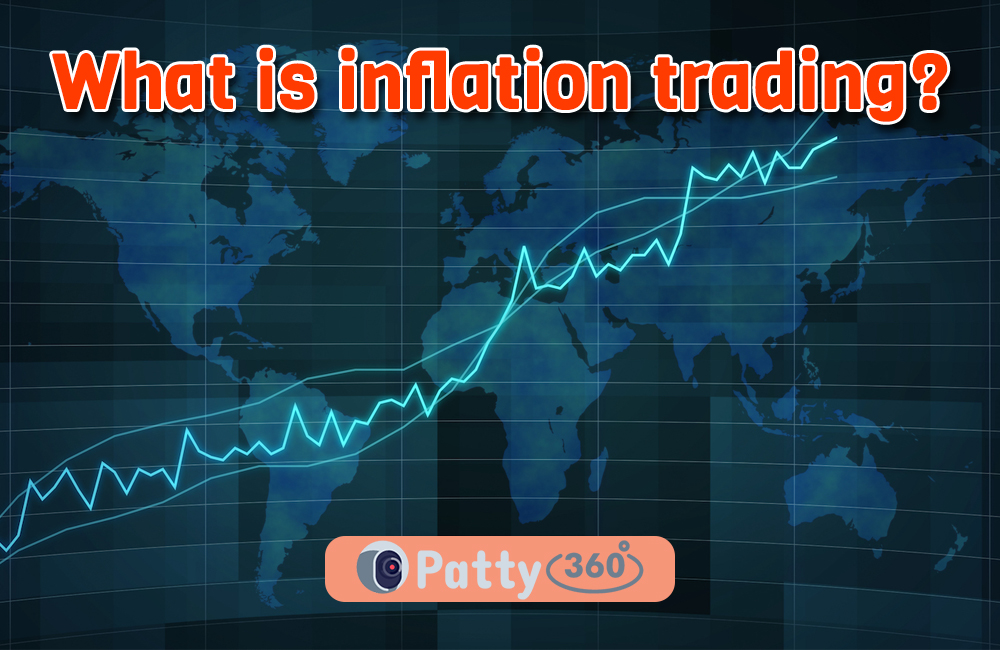Technology
What is inflation trading?

Inflation trading is an investment strategy in which investors seek to profit from changes in inflation rates. Inflation is the rate at which the prices of goods and services rise. It affects financial markets as well as the economy. In this article, we’ll give you an overview of inflation trading, including common strategies to protect investment portfolios from inflation and how to profit from it.
How does inflation impact investments?
Inflation rates can have a significant impact on investments, particularly long-term investments. When inflation is higher than the rate of return on an investment, the investment’s purchasing power will gradually decrease. For instance, if your investment returns 5% profit a year but the rate of inflation is at 6%, you’ll be losing purchasing power. As such, investors need to consider how inflation affects things when they make decisions about their investments.
How can you protect investment portfolios from inflation?
One of the most heavily used strategies to protect an investment portfolio is to invest in bonds that are directly linked to inflation. These are called treasure inflation-protected securities, or TIPS. These are U.S. Government bonds whose principal value adjusts when there are changes in the consumer price index (CPI). The CPI is a measure of inflation. When inflation is high, the principal value of these bonds increases, which gives investors a hedge against inflation.
Successful investors often branch into real estate as this is also a good hedge against inflation. When you invest in real estate, especially rental properties, you’ll tend to notice an increase in value with inflation because rental income and property values often rise with inflation. Investing in infrastructure and materials is also a good idea at times of inflationary price rises. Metals, minerals, utilities, and transportation are also good options for investment at these times.
Investing in company stocks with products and services that are in demand is also a good strategy. When companies can pass on increased costs to consumers during periods of high inflation, it’s a good idea to invest in them. Examples of such companies include consumer staples like the food and drink industry, for example, Coca-Cola and Proctor & Gamble.
Another investment strategy to consider is investing in commodities like oil or gold. These have been proven to be a good hedge against inflation because their prices also often rise alongside inflation. What’s more, commodities typically correlate negatively with bonds and stocks and so, they give diversification benefits in your investment portfolio.
Why do the prices of commodities like gold rise with inflation?
There are several reasons why these prices rise with inflation. Firstly, they’re often in limited supply. Gold, for instance, is a finite resource with limited supply. As a result, changes in demand have an impact on prices. Another reason is because of currency devaluation, which happens with high inflation. Those who invest in Forex, often switch to investing in gold when inflation is high.
Strategies for profiting from inflation
As well as protecting your investment portfolio from inflation, investors can directly profit with a range of strategies. A good strategy is to invest in inflation-sensitive products, like healthcare and energy, as these companies often benefit from rising prices during periods of high inflation.
High-yield bonds are also a worthwhile investment. These ‘junk bonds’ usually have a higher yield compared to investment-grade bonuses, due to their risk. However, during periods of high inflation, these bonds tend to increase in value.
Finally, options are another way to profit from inflation. These are financial instruments that give the holder the right to buy or sell an underlying asset before a specified date or at a specified price (but they’re not obliged to).
The temporary nature of investing and inflation
It’s important to remember that both investing and inflation are subject to fluctuations and volatility over time. When inflation is high, investors are often concerned. However, inflation is often temporary and is influenced by a range of factors, like supply chain disruptions and monetary policy. As such, investors need to take a long-term view of their investment portfolio and maintain a diversified portfolio.
Final thoughts
To summarize, inflation trading is an investment strategy that looks to make profits from inflation rate changes. There are lots of available strategies available to investors to protect their investment portfolios from inflation. What’s more, there are even ways to profit from inflationary changes. Some strategies include investing in inflation-linked bonds, real estate, commodities, high-yield bonds, options, and stocks of companies that have inflation-sensitive products or pricing power. However, it’s important for all investors to consider their risk tolerance carefully alongside their investment objectives and overall portfolio diversification.






